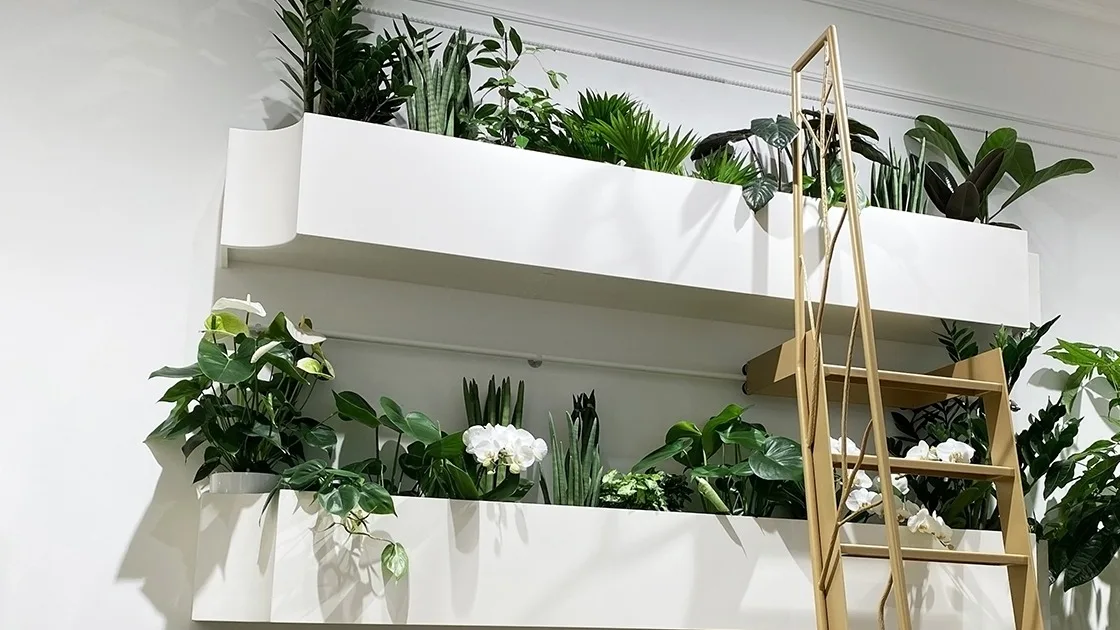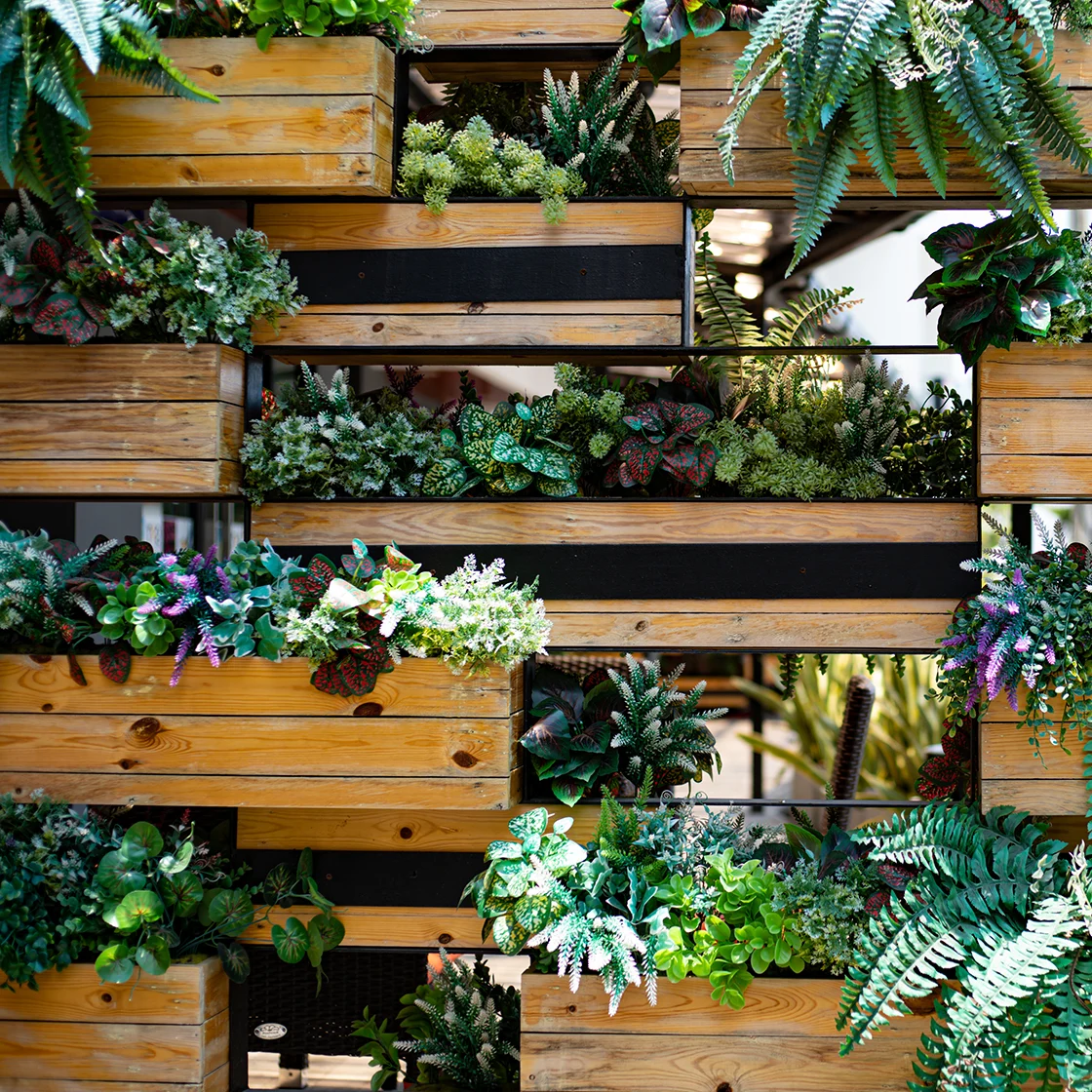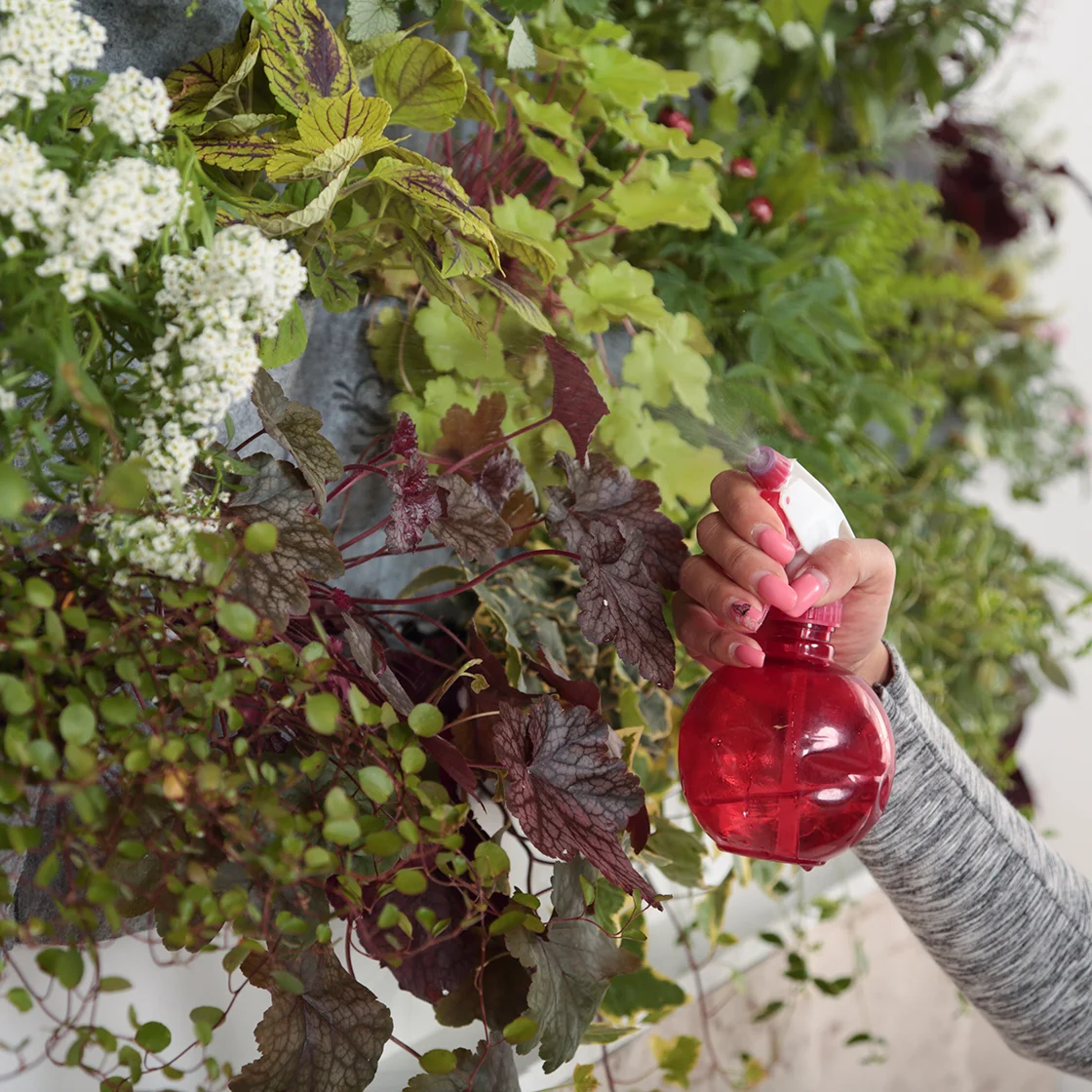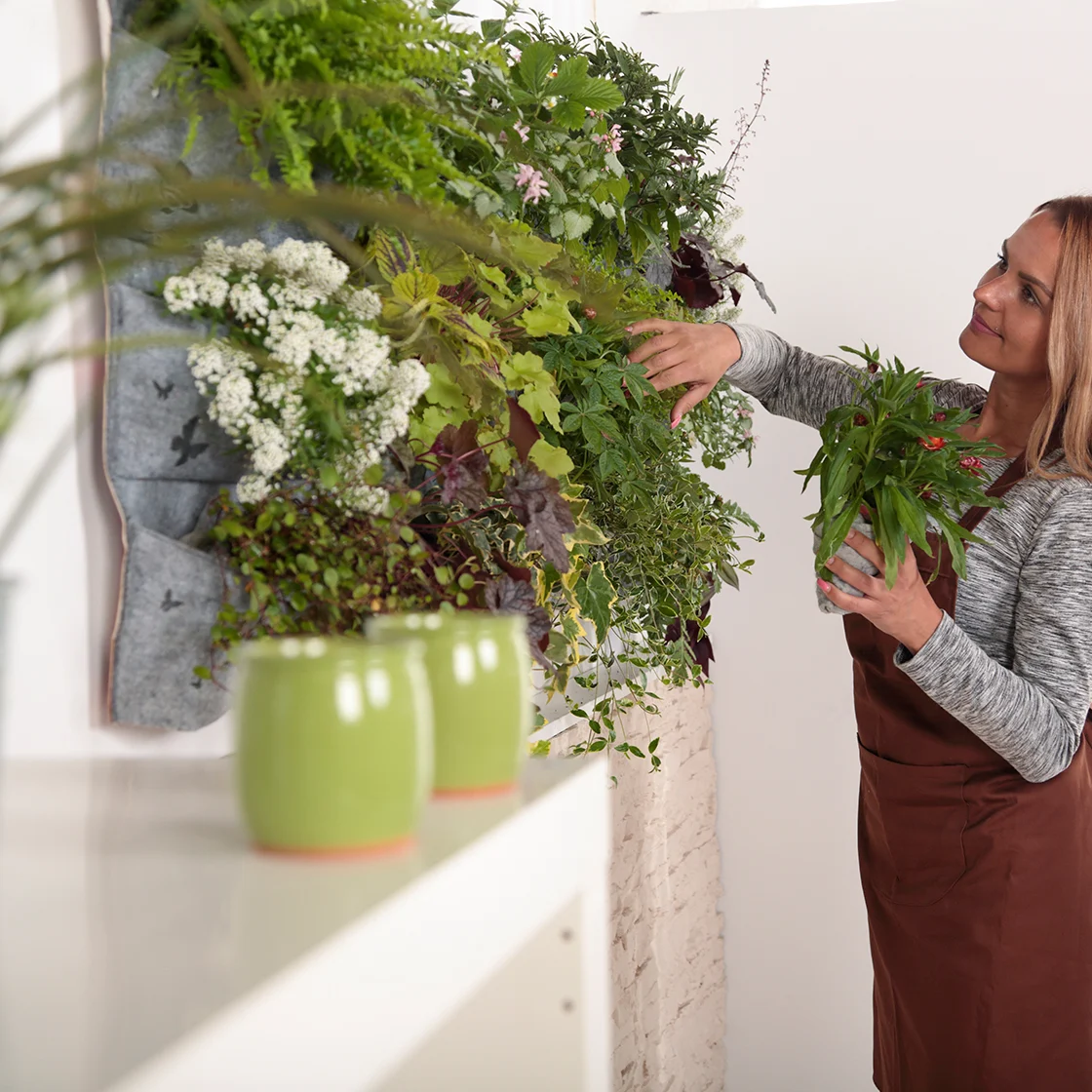Here’s How to Create a Living Plant Wall

Studies have shown that plants can improve your mood and mental wellbeing. A living wall will do this too, along with enhancing the beauty and interior décor of your home. Plants also emit oxygen, so these verdant vertical gardens can also improve your home’s air quality. Plant walls vary in shape, size and scale. You can use ornamental plants to create a piece of living wall art, and even edible plants for culinary use in the kitchen.
Choosing Your Plant Wall Location
If you plan to install an indoor living wall in your home, it’s important to assess your environment to ensure that it will have enough light to thrive. Since plants require light to produce their own food through photosynthesis, natural light from a skylight or window is ideal for most green walls. The more light you have, the wider the range of plant species you can choose from for your living wall. Most houseplants prefer temperatures between 55 and 75°F, so adjust your thermostat accordingly. Many indoor plants will also benefit from the presence of an open window or fan to circulate air and prevent dampness, condensation, or cold and hot spots from forming.


Adding More Light
Supplementary lighting may be necessary to keep your living wall happy and healthy year round. Grow lights and other artificial lights will optimize light conditions for your indoor garden wall and let your plants grow and thrive as they would outdoors. Ceiling-mounted track lighting systems and adjustable recessed lights offer plenty of concentrated light and allow you to change your lighting arrangement as the plants grow. High-powered LED bulbs can focus super-bright light on your living wall and help to dry out the plants between waterings.
Plant Wall Design Options
There are a variety of ways to create an indoor garden wall in your home. Prefabricated living wall systems are available, but going the DIY route lets you customize your living wall to suit your personal style and match your home’s décor. Here’s some ideas:
Wall Trellis: Install a wood or metal garden trellis on your wall and use plant hangers to attach planter pots to the structure.
Floating Shelves: Arrange potted plants on open shelves and let the dense foliage from trailing plants hide the shelves and pots.
Wall Pockets: Grow plants in wall envelopes made of felt or breathable landscape materials and hang them on the wall.
Modular Planters: Stack and arrange raised garden planters to create a vertical garden.
Metal Racks: Mount wire or metal racks to the wall to display planter pots filled with climbing houseplants.
Pegboards: Install a wooden pegboard with dowels and shelves and arrange potted plants on them.
Hanging Baskets: Hang woven wicker, jute or crochet baskets filled with herbs on your wall.


Watering Your Plant Wall
You can choose to water your living wall by hand or install a self-watering drip irrigation system to ensure they stay hydrated. For manual irrigation, make sure to water your plants on a regular basis with an indoor watering can. Choose plants that have similar moisture needs and take care not to overwater. A tiered design will allow the water from your top plants to trickle down, but you should add a water-repellent backdrop to protect your wall.
Best Pots for Your Plant Wall
Choose pots that work aesthetically with your space but are two to three times larger than the plant to allow room for growth. The pots should also have drainage holes and saucers. Stone and porcelain planters are long-lasting and add a natural look, while ceramic clay and terracotta pots are more water absorbent and let you play with pops of colour.

Use Indoor Potting Soil
Indoor and outdoor soils have different compositions and characteristics. Indoor potting soil provides better moisture retention, drainage, and air circulation than outdoor soil. This will help to nurture plant growth and help prevent root rot on your indoor garden wall. Indoor potting mix is also less likely to contain pests and weed seeds. Using indoor potting soil, fertilizer and plant food will help ensure your greenery gets the right nutrients to grow and thrive.

Best Plants for Your Green Wall
If you’re growing a vertical garden for practical purposes, you can plant herbs, microgreens and even some vegetables. If you’re planting an ornamental living wall you can choose plants based on a specific colour palette, seasonal flowering schedule, or visual aesthetic. Choosing the best varieties depends largely on your lighting conditions. Here’s a few suggestions to get you started.
For Low Light Conditions: Choose snake plants, peace lilies and Brazil philodendrons
For Medium Light Conditions: Choose English ivy, Song of India and ferns
For High Light Conditions: Choose succulents, cacti and bromeliads
Living Plant Wall Maintenance Tips
While it’s best to choose low-maintenance plants for your living wall, periodic maintenance will help keep them looking their best all year round. Here are some helpful tips:
Prune or trim back any excessive foliage
Spritz your plant leaves with soap and water to prevent help keep bugs away
Remove plants occasionally to clean your wall
Look for signs that you need to adjust your watering, such as wilting plants, dry soil or brown-tipped leaves

A living wall offers a wonderful way to bring nature into your home. You don’t need to build an entire wall right away either. Start small by installing a few shelves or hanging a few baskets. After a few weeks, if the plants are doing well and they’re complementing the space, forge ahead to complete the entire wall!